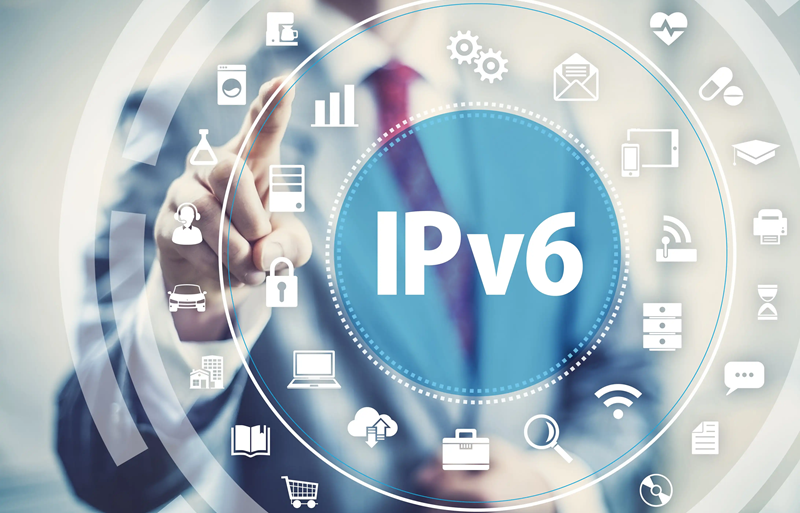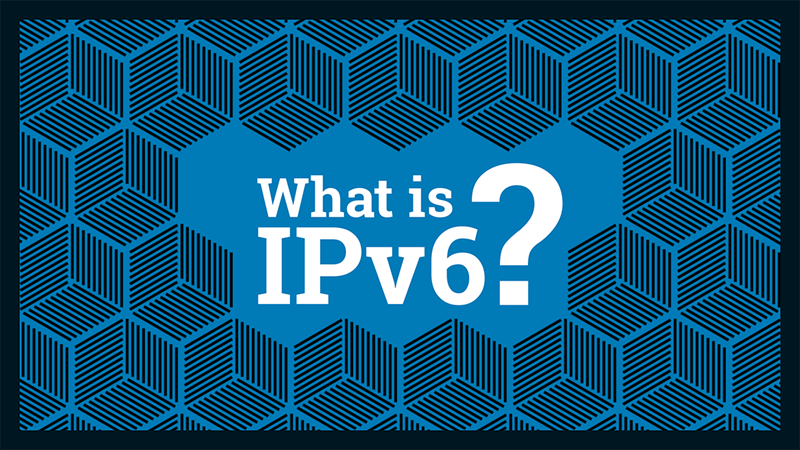Internet Protocol version 6, or IPv6, is the latest iteration of the communications protocol that provides an identification and location system for computers on networks and routes traffic across the Internet. This new standard addresses the shortcomings of its predecessor, IPv4, particularly the issue of IP address exhaustion. IPv4, the older version, uses 32-bit addresses and supports roughly 4.3 billion devices connected directly to the Internet. However, the rapid growth of the Internet and the proliferation of connected devices have led to a scenario where the number of available IP addresses is no longer sufficient.
IPv6, on the other hand, utilizes a 128-bit address space, allowing for a virtually limitless number of unique IP addresses. This expansion means that every device can have its unique address on the Internet, negating the need for network address translation, a workaround utilized in IPv4 when address spaces are exhausted. This vast pool of addresses is critical in supporting the continued growth and evolution of the Internet, enabling an even greater number of devices, from traditional computers and smartphones to emerging technologies like Internet of Things (IoT) devices, to connect directly to the Internet.
In addition to the larger address space, IPv6 also introduces several enhancements in terms of efficiency, security, and performance. It simplifies packet header structures, making data routing more efficient and improving performance. It also supports multicast addressing, which allows bandwidth-intensive packet flows (like multimedia streams) to be sent to multiple destinations simultaneously, saving network bandwidth. Moreover, it mandates the support for IPsec, a suite of protocols for securing network connections, which was only optional in IPv4.
Despite these advantages, the transition to IPv6 has been slow. This is primarily due to the costs associated with upgrading hardware, software, and network infrastructure to support the new protocol. Additionally, the coexistence of IPv4 and IPv6 during this transition period adds complexity to network management and operations. However, given the long-term benefits and the inevitable exhaustion of IPv4 addresses, the shift towards IPv6 is essential for the continued growth and functionality of the Internet.
The transition to IPv6 also has implications for policy and governance. For instance, the larger address space and the direct connectivity of devices pose new challenges for privacy and security. Furthermore, the redistribution of IP addresses might impact the balance of power in cyberspace, as countries and organizations that currently hold large portions of the IPv4 address space may not have the same control in an IPv6-dominant world. Hence, it is crucial for policymakers, industry stakeholders, and the technical community to engage in informed discussions about the opportunities and challenges brought about by IPv6, to ensure that the transition is managed in a manner that is beneficial for all users of the Internet.
In conclusion, IPv6 is a key technology for the future of the Internet. It addresses the limitations of IPv4 and offers significant improvements in terms of address space, efficiency, and security. However, the transition to IPv6 is not without challenges, both technical and policy-related. As the Internet continues to evolve and grow, it is crucial to embrace IPv6 and navigate these challenges effectively to ensure the Internet remains open, resilient, and inclusive.

IPv6 Specification: Internet Protocol, Version 6
Internet Protocol Version 6 (IPv6) is the most recent version of the communication protocol that provides an identification and location system for computers on networks and routes traffic across the internet. It was developed by the Internet Engineering Task Force (IETF) to deal with the long-anticipated problem of IPv4 address exhaustion.
IPv6 is intended to replace its predecessor, Internet Protocol, Version 4 (IPv4), which has been around since the inception of the internet and still carries the majority of Internet traffic today. IPv6 employs a 128-bit address length, enabling a significantly larger number of unique addresses than the 32-bit address length of IPv4. This extended address length is particularly critical in the current digital era, where more and more devices are being connected to the internet.
One of the most significant enhancements in IPv6 is its capability to allow direct, end-to-end connectivity. It does this by eliminating the need for Network Address Translation (NAT), a system that was used to overcome the address shortage in IPv4. IPv6 also includes improvements to routing and network auto-configuration. Another notable feature of IPv6 is its improved support for options and extensions, which are expressed in additional headers that are placed after the IPv6 header, whereas in IPv4 they were included within the header. This simplifies and speeds up the processing of the packet data.
IPv6 also integrates security protocols such as Internet Protocol Security (IPSec), providing confidentiality, data integrity, and authentication at the network layer. IPv6 adoption has been slow, largely due to the cost and complexity of migration. Nevertheless, the use of IPv6 has been growing, especially in mobile networks, and it is expected to become the dominant protocol as the exhaustion of IPv4 addresses becomes more acute.
Streamlining Standards: Two Maturity Levels
Streamlining Standards: Two Maturity Levels is a subject that focuses on the two different stages of development in standardizing processes within an organization. The first maturity level, often referred to as the elementary level, is characterized by the initial attempts to create uniformity in processes and operations. During this stage, organizations typically establish basic procedures and guidelines that help in achieving some degree of consistency. However, these initial standards may not be thoroughly documented or widely communicated, hence they may not be fully integrated into the organization’s daily operations.
Transitioning to the second maturity level involves refining, documenting, and broadly communicating these standards. It signifies a more advanced stage where an organization has fully embraced standardization and made it a part of its culture. The standards at this level are often detailed, clear, and easy to understand, making them easier to follow. They are also routinely reviewed and updated to ensure they remain relevant and effective. In this stage, standardization is no longer a mere concept but an integral part of the organization’s operations.
A key aspect of streamlining standards across both maturity levels involves the use of technology. Software applications and digital platforms can be instrumental in communicating standards, monitoring compliance, and identifying areas for improvement. They also make it easier to adapt to changes by providing a platform for updating and disseminating new standards. Furthermore, technology can facilitate the gathering and analysis of data to measure the impact of standardization on the organization’s performance.
Achieving the second maturity level in streamlining standards is a significant milestone for any organization. It reflects a high level of commitment to efficiency, consistency, and quality. More importantly, it provides a strong foundation for continuous improvement, innovation, and growth. However, it requires a strategic approach, strong leadership, and the active involvement of all stakeholders.

Path MTU Discovery for IPv6
Path Maximum Transmission Unit (MTU) Discovery for Internet Protocol version 6 (IPv6) is an essential component of the networking protocol suite. It is a mechanism that determines the largest packet size that can be transmitted over a network path without the need for fragmentation. Unlike IPv4, which allows fragmentation at any point along the path, IPv6 insists that the source node perform fragmentation, which is best accomplished when the source node knows the smallest MTU of all the links in the path to the destination.
Path MTU Discovery for IPv6 operates by setting the ‘Don’t Fragment’ bit in the IPv6 header, thereby prohibiting routers from fragmenting the packet. If a packet exceeds the MTU of a link along its path, the router drops the packet and sends an Internet Control Message Protocol (ICMP) “Packet Too Big” message back to the sender. This message contains the MTU of the link that caused the packet drop. The sender then reduces its estimated path MTU to the MTU indicated in the ICMP message and continues transmission.
This process allows a sender to incrementally discover the smallest MTU along the path. It is a more efficient way of handling large packets as it reduces the overhead of fragmenting and reassembling packets in transit. However, it relies on the successful delivery of ICMP “Packet Too Big” messages, the blocking of which can lead to severe communication problems. Therefore, understanding and correctly implementing Path MTU Discovery for IPv6 is crucial in ensuring optimal network performance.
Packetization Layer and Path MTU Discovery
Packetization Layer and Path Maximum Transmission Unit (MTU) Discovery are key aspects in the realm of data communication, particularly in the transmission of data over a network. The Packetization Layer refers to a layer in the network protocol stack that is responsible for fragmenting and reassembling packets of data to be sent over a network. This process involves breaking down large data files into smaller, manageable packets that can be easily transmitted and then reassembled upon delivery. This layer ensures efficient data transmission by preventing the network from being overwhelmed by large amounts of data at once.
On the other hand, Path MTU Discovery is a mechanism used in the Internet Protocol Suite to ascertain the maximum packet size permissible for transmission over a network path. The primary objective of this process is to avoid packet fragmentation, which can lead to inefficiency and data loss. Path MTU Discovery involves sending packets with the “Don’t Fragment” (DF) bit set in the IP header. If a packet is too large for a particular network link, it will be dropped, and an “ICMP Fragmentation Needed” message will be returned. This message includes the MTU of the link that caused the packet to be dropped. The sender can then adjust the packet size accordingly for subsequent transmissions.
Both the Packetization Layer and Path MTU Discovery play an integral role in optimizing network performance and ensuring seamless data transmission. They work hand in hand to provide an efficient system for managing data packets, prevent network congestion, and minimize data loss. Understanding these concepts is therefore crucial in the field of network engineering and data communication.

ICMPv6: Internet Control Message Protocol for IPv6
ICMPv6, an abbreviation for Internet Control Message Protocol for IPv6, is an essential element of the Internet Protocol Suite, specifically designed to be used with the Internet Protocol version 6 (IPv6). As a fundamental protocol, it is primarily employed for diagnostic and error control functions. Its main role is to provide hosts with notifications regarding network problems, aiding in the smooth operation of the network. ICMPv6 is also responsible for many vital functions such as neighbor discovery, multicast listener discovery, and stateless address autoconfiguration.
It is the mechanism that allows a source node to discover the routers connected to its local link, gather information about which nodes belong to certain multicast groups, and helps nodes to self-configure their addresses. The protocol also carries out path MTU discovery, which is the process of determining the maximum size of a packet that can be transmitted without needing fragmentation. ICMPv6 messages are typically triggered by errors in the processing of packets, such as when a packet cannot reach its destination or when a gateway cannot forward a packet due to its size.
In addition, it is responsible for sending echo request and reply messages, commonly used for testing the accessibility of a host on an Internet Protocol network. Therefore, ICMPv6 is a critical component in the network layer of the internet protocol suite, ensuring effective and efficient communication between network devices. Its existence allows for the detection and reporting of issues concerning the processing of IPv6 packets on the internet, contributing significantly to the overall performance and reliability of the network.
